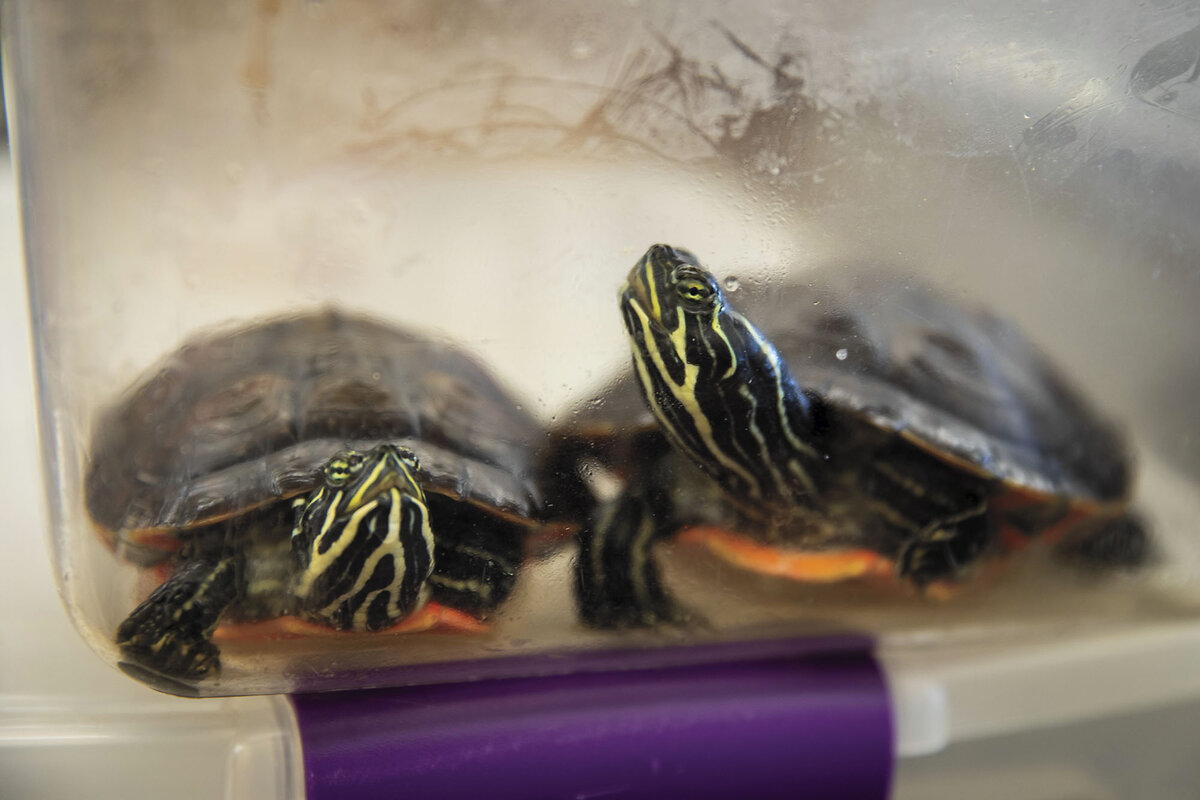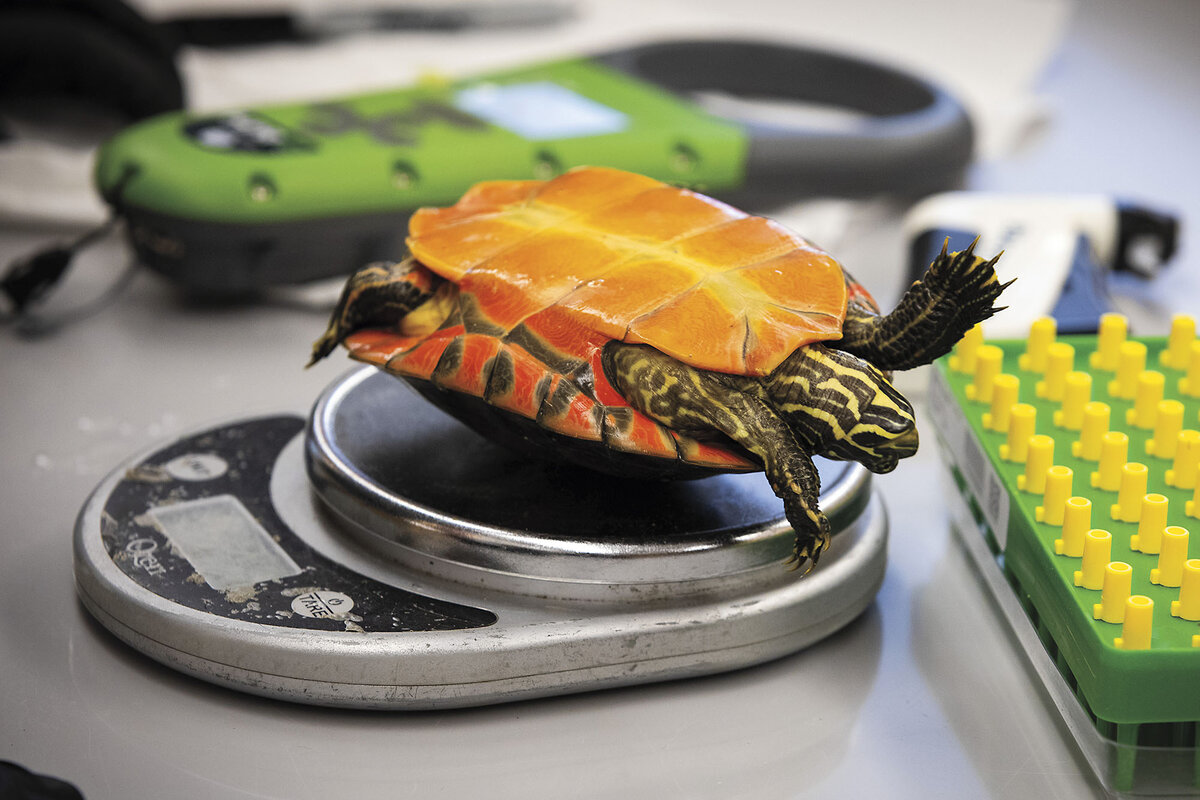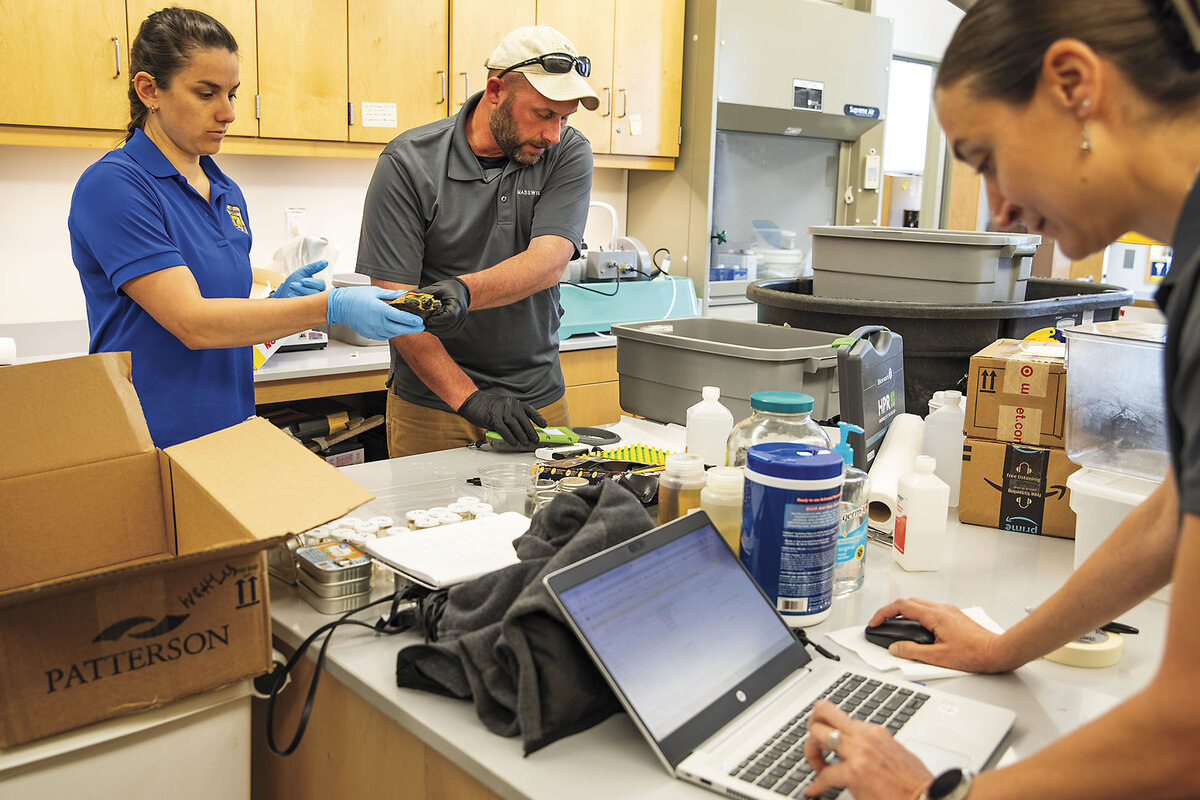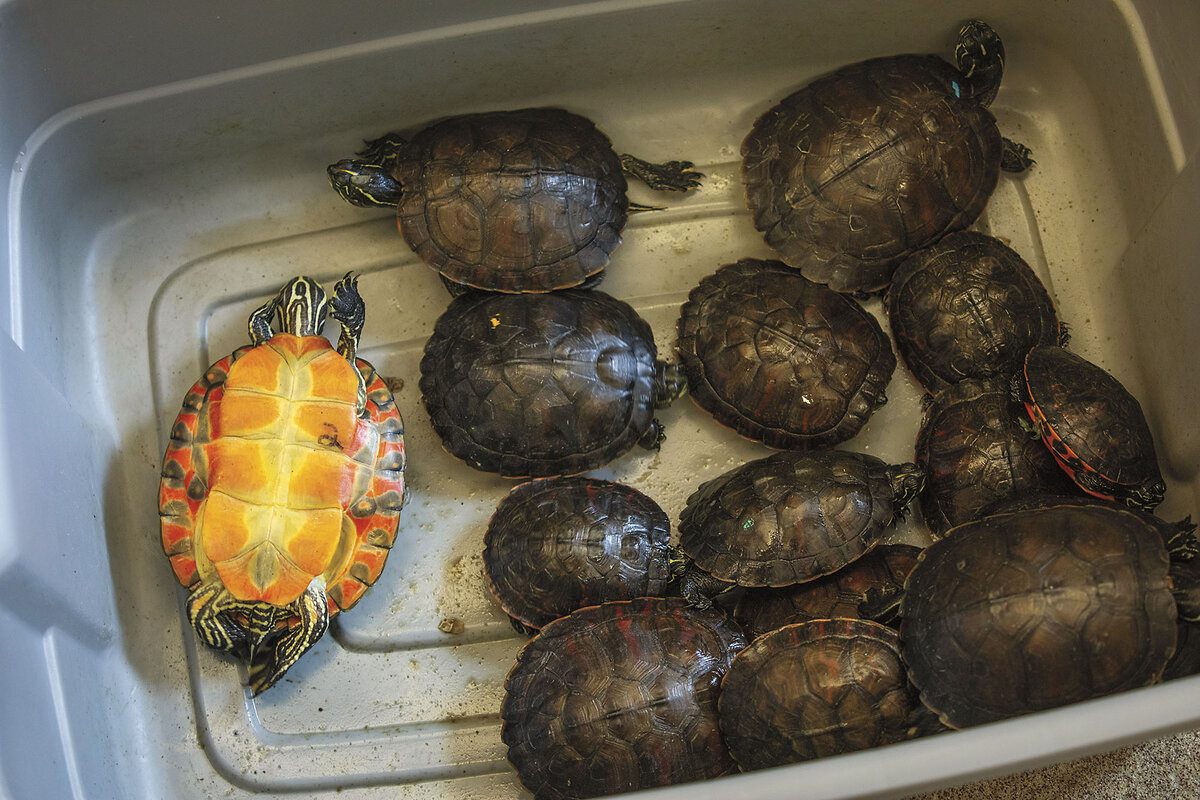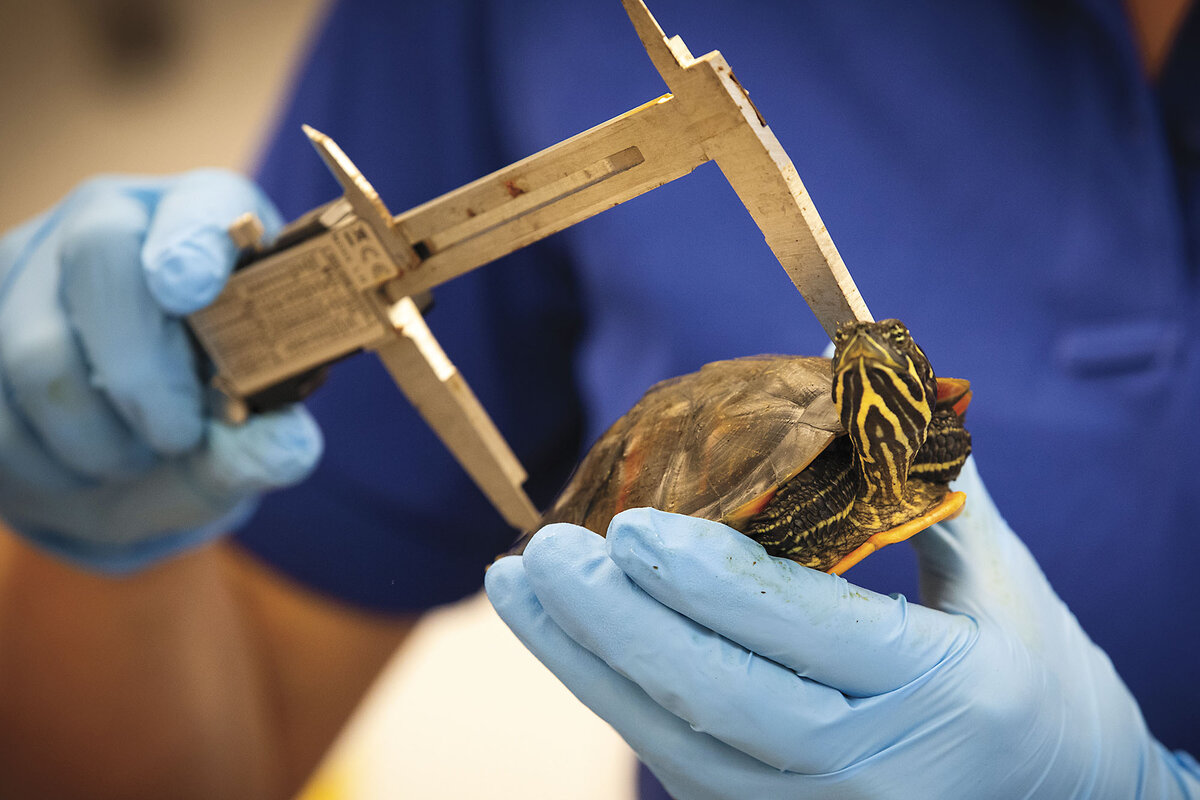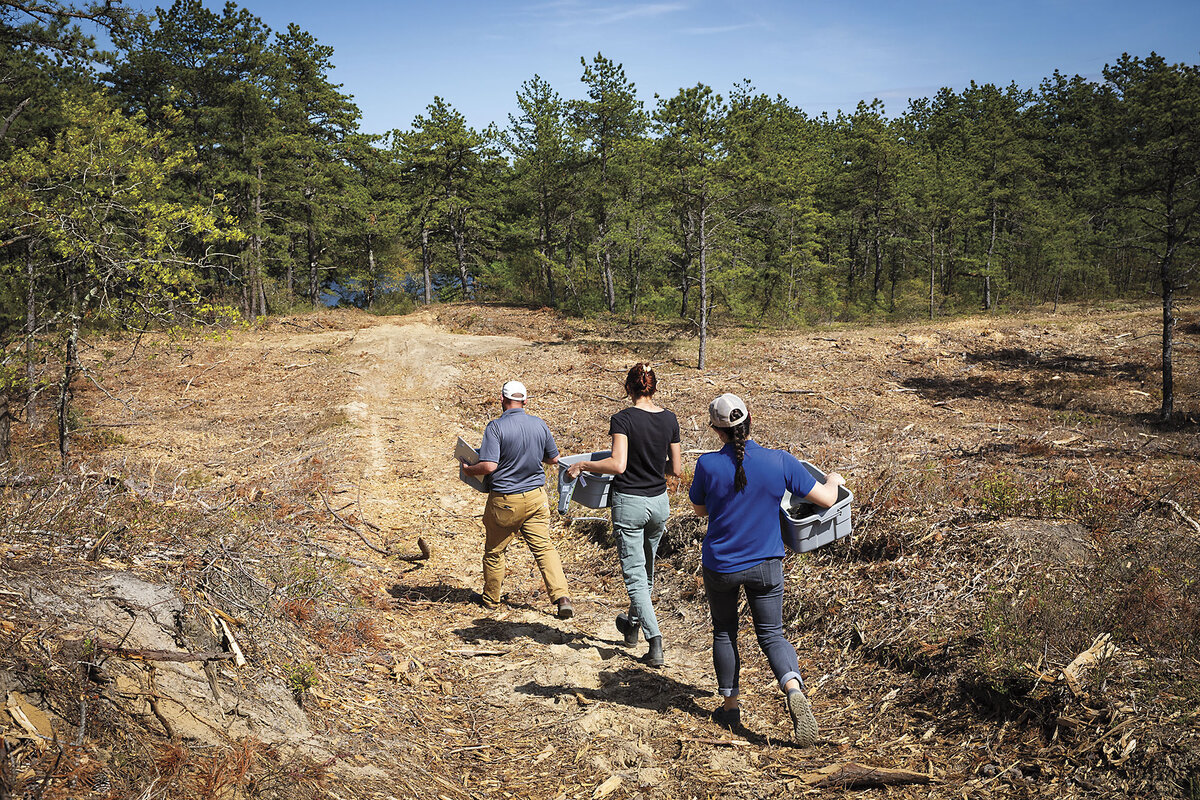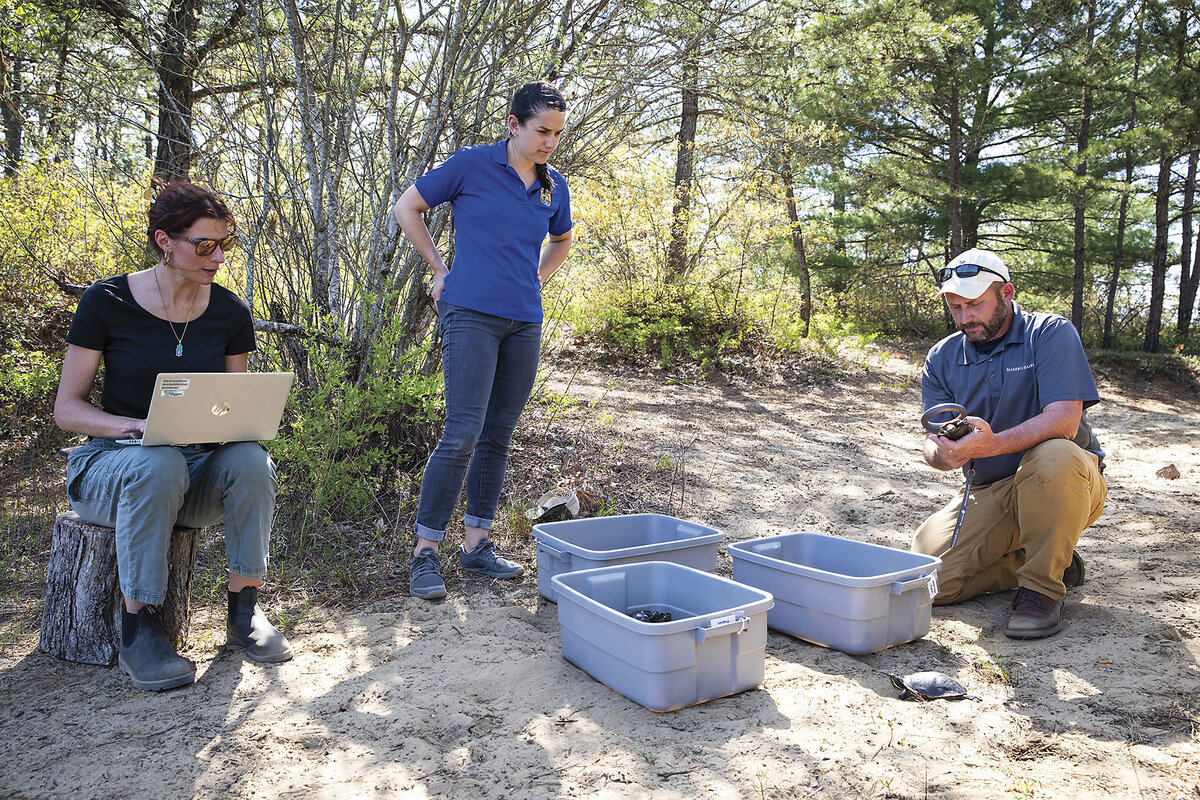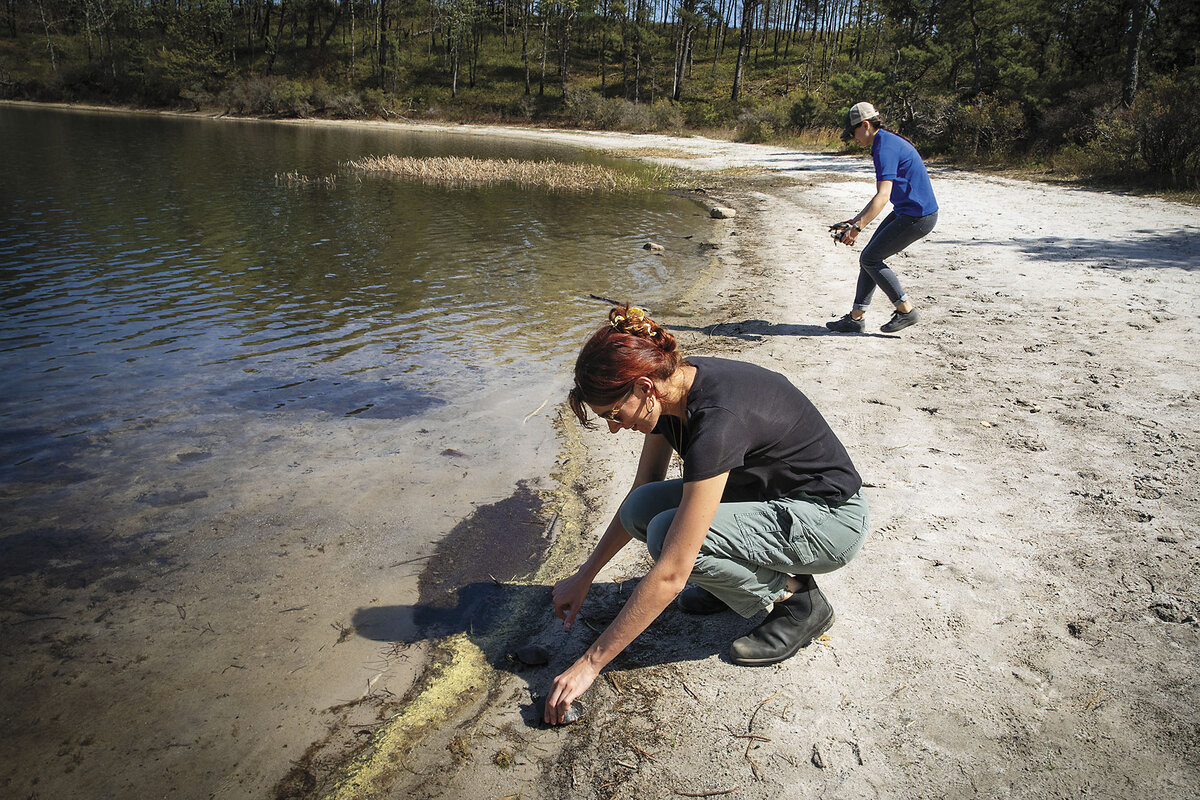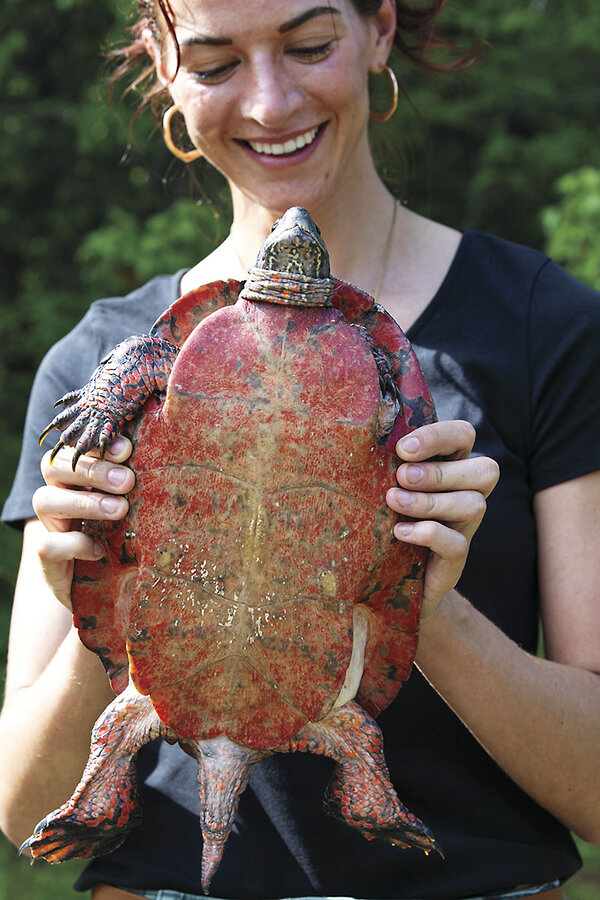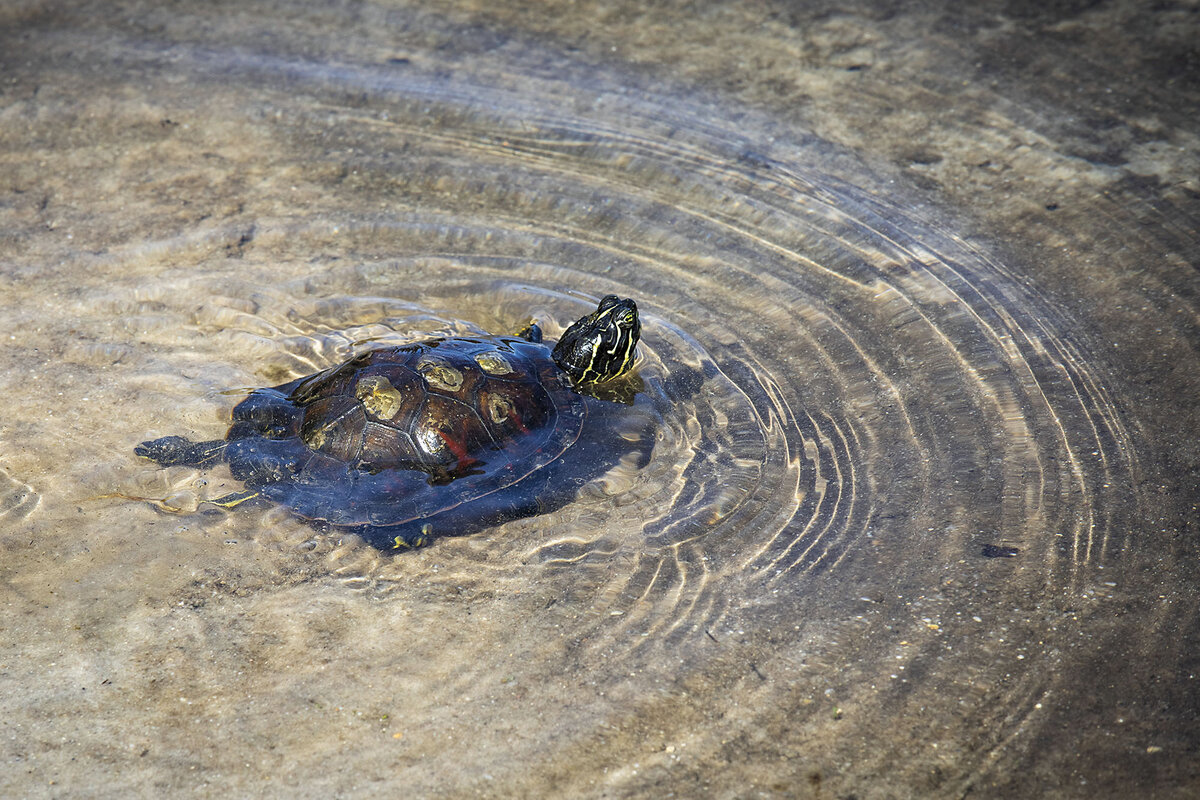These turtles are endangered. Young scientists have stepped up to help.
Loading...
| Plymouth, Mass.
For 20 years, young scientists in Andrew Ward’s classroom at Eagle Hill School have been giving endangered turtles a head start in life.
The students in Hardwick, Massachusetts, play a crucial role in a long-running conservation program overseen by the state Division of Fisheries and Wildlife (MassWildlife). Over four decades, the program has led to a tenfold increase in the number of northern red-bellied cooters, a freshwater turtle species.
Mr. Ward’s students nurture the turtles in a 45-gallon tank, feeding them each two heads of lettuce a day and monitoring their weight and length over the next eight to nine months. When they aren’t handling the turtles, the students are devising solutions to problems – all with the scientific method in mind.
Why We Wrote This
Early nurturing before being released into the wild can make all the difference for endangered animals. Northern red-bellied cooters, a freshwater turtle species in Massachusetts, are one example of this.
For example, maintaining water quality is critical for growing big, healthy turtles. The students quickly discovered that as the turtles quintuple in size, so does the amount of waste they leave behind in their tank. To address this problem, the students tried replacing their tank’s water filter with one meant for a 1,000-gallon pool. Their ingenuity paid off, and their solution was shared with other local partners in the program who faced the same challenge with their own turtles.
“My kids felt a little bit proud,” Mr. Ward says with a chuckle. “They just knew what their problems were and came up with ideas on how to solve those problems.”
Dramatic success
Northern red-bellied cooters are the second-largest freshwater turtles in Massachusetts, after common snapping turtles. Born no bigger than a quarter, cooters can grow to 1 foot in length and live more than 50 years.
Massachusetts began “headstarting” cooters in 1984. As part of this conservation practice, vulnerable hatchlings are collected from the wild and raised in controlled, predator-free environments until they’re large and strong enough to live outdoors on their own.
“Our goal is to put them in a warm, food-rich environment for the duration of the winter,” Mr. Ward says. His classes at the private school have raised about 100 turtles for the program over two decades. About three or four students volunteer to participate each year.
When the program began, fewer than 300 cooters were thought to be living in the wild in the state. Although no official count has been done since 2021, scientists believe that there are more than 3,000 cooters in the wild by now.
“This turtle had really dwindled by the 1980s,” says Mike Jones, a herpetologist with MassWildlife.
“They were only in 12 ponds then. Now, they’re in more than 30.”
The hatchlings are collected each fall from protected nests that MassWildlife has identified, either on public beaches or private property. Of the protected nests, less than half are selected for headstarting, while the rest hatch naturally.
The turtles are raised by wildlife scientists and local partners – mostly middle and high schools in eastern Massachusetts – from September to May. In the classroom environment, the turtles grow to the size they would naturally reach at age 3, giving them a vastly better opportunity for survival when released in the spring.
Last year marked the 40th annual release of the headstarted turtles, with the program reaching a milestone: The 5,000th turtle was released into the wild.
The University of Massachusetts Amherst has studied the program and found that 95% of headstarted turtles survived three years after being released.
While the population is much more stable now, the turtles are still listed as both a state and federally endangered species. Dr. Jones says the turtles face threats from habitat loss, car or boat accidents, and natural predators.
Release day
On a cloudless afternoon at a quiet pond in Plymouth County, cattails and lily pads float near the water’s edge. It’s a welcoming of sorts for nearly one hundred baby cooters, keen to swim freely in freshwater for the first time.
Earlier that day, the turtles’ height and weight were measured at MassWildlife’s field headquarters in Westborough. They were also implanted with a tag to help identify them if caught later and to collect data on their movements.
As release time approaches, MassWildlife biologists scan each turtle’s tag one final time before gingerly placing the animals on the sand and waiting for them to immerse themselves in the pond. For one of the turtles – a 38-year-old from one of the first headstart cohorts – the release marked a full-circle moment. Researchers recently rescued him from a road, 8 miles from the pond into which he was originally released. They returned the turtle to the water just as a new generation entered the pond.
Encountering nature
Liba Vitols, a sophomore at Eagle Hill, dreams of becoming a wildlife rehabilitator. During her visit to MassWildlife’s field headquarters, where her group had turned in their turtles to be released, she says the program allows a piece of the great outdoors into the classroom.
“We’re sitting in a building for most of the day, and this brings a little bit of that nature where we can easily get it,” says Liba, who has raised turtles at school for two years now. “It’s really special that I get to work with the turtles and learn about them in a way that’s really supportive.”
Aiden Ward, a freshman in his father’s class, also works with the turtles and enjoys hands-on learning outside his comfort zone. “They live in a completely different world than us, so it’s really interesting learning and raising them,” he says.
Back at the pond in Plymouth County, Dr. Jones reflects on how far the program – and the turtles – have come. As a high school student in the 1990s, he helped raise a handful of hatchlings himself through the same headstart program. Now, as Massachusetts’ leading reptile expert, he has watched many of those early turtles grow into adults.
He says working in long-term conservation over decades has taught him to trust in the process and savor the inspiring moments.
“We saw them today as 1-year-olds, but when you see a 40-year-old adult, swimming beneath you all red and black, it’s otherworldly,” he says.
Watching the last turtle disappear into the water, Dr. Jones adds, “It’s nice to think of them under the stars tonight.”





